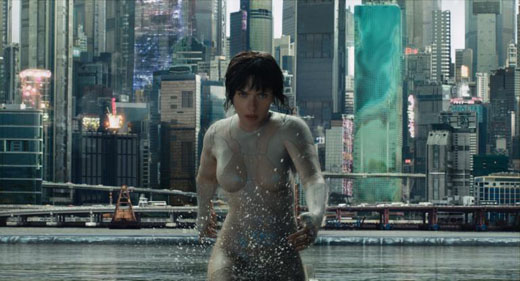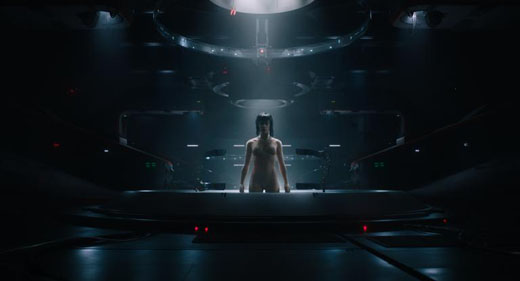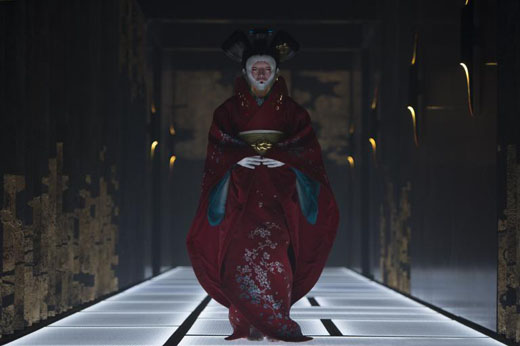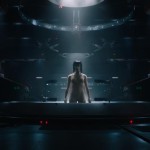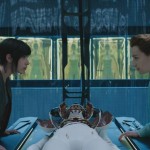Review: Ghost in the Shell (2017)
Director Rupert Sanders (Snow White and The Huntsman) directs this loose live action adaptation of Mamoru Oshii’s groundbreaking 1995 cyberpunk anime Ghost in the Shell. An adaptation that invokes the visuals of its source to the exception of the heart and soul behind it, remaining a hollow copy of it at best.
Big screen adaptations of anime are spotty at best. 1995’s live action adaptation of the Fist of the North Star anime tried to do a literal adaptation of the cult favorite anime film, but its low budget nature made the whole enterprise come off silly and poorly thought out in hindsight. A decade later, 2005’s Aeon Flux went the route of an origin story and tried to capture some of the visual flair of the Liquid Television anime that spawned it, but ultimately succeeded in turning off the hardcore fan base that cried out for an adaptation in the first place. Ghost in the Shell falls on the same side as Aeon Flux; an unnecessary and extremely loose adapation that cannibalizes its best scenes shot for shot from the anime that popularized it while replacing its critically acclaimed storyline with a poorly thought out origin story in its stead.
Scarlett Johannsen plays Major Mira Killian, a recipient of a life saving cybernetic body from the CEO of multi-national cybernetic firm Hanka Robotics. The CEO of Hanka, Cutter (Peter Ferdinando), orders that Major be made part of the elite police unit Section 9 immediately upon her activation. Time passes by, and Major is a core member of of Chief Aramaki’s (‘Beat’ Takeshi Kitano) Section 9, when she is tasked to investigate the death of a Hanka executive (Michael Wincott) by his geisha pleasure unit. The Geisha-bot was hacked and taken over by an anti-Hanka hacker named Kuze (Michael Pitt), a mystery man whose agenda against Hanka is tied into helping Major find out the truth about herself. A truth called Project 2571 that is tied to mysterious visions/glitches Major is having in regards to a small rundown pagoda and what happened to her before she joined Section 9.
Much has been made about the “whitewashing” inherent in the casting of Johannsen as Major, a character originally called Motoko Kusanagi in the anime and manga of Ghost in the Shell. Rather than own it, as it initially appears, the film makes it a bizarre plot element that turns this version of Ghost in the Shell into an ersatz RoboCop remake. It turns out that Major was originally Motoko Kusanagi (Kaori Yamamoto), a young Japanese runaway who was part of a group of kids hiding out in the rundown pagoda with Kuze. Hanka was responsible for her death as a means of finding suitable candidates on the fringe who would not be missed for their cybernetic experiments. Kuze was a flawed early prototype who is out for revenge; Motoko was placed in the Major’s Scarlett Johannsen shell; stripped of her original name, memories and ethnicity, and made a weapon by Hanka. A weapon Hanka later tries to destroy by means of its ED-209 like spider-tank.
There’s a lot to unpackage in this revelation and the film doesn’t really try to touch on any of the original anime’s thoughts about whether machines can develop consciousness; or even what the drastic changes that literally wash away the original Motoko’s identity into the weaponized Major mean to her. Johannsen plays the character in a completely robotic manner emblematic of the detached humanoid characters she’s played in Lucy and Under the Skin. That manner suited those roles. Here, in a role that demands some pathos, feeling, and introspection, that type of performance rings hollow. Especially one where Johannsen is showcasing a Barbie-doll nude physique firing guns throughout the bulk of the movie rendering her an even more inhuman and less relatable character. This might be at the feet of director Sanders, who got about as much emoting out of Kristen Stewart in Snow White and The Huntsman. Most of the film’s best shots are lifted directly from Oshii’s groundbreaking 1995 anime, shot for shot, regardless of context; the rest is workmanlike at best, with pacing issues throughout that make the film drag to a crawl. There’s also the bizarre realization that a movie set in a futuristic Japan only has a handful of Japanese actors actually cast in it, the most prominent of which, Rila Fukushima (Yukio in The Wolverine) is ostensibly only in the film as the basis of the geisha-bot’s robotic facemask and the actual geisha-bots are played by stunt people. Beat Kitano delivers all his lines in Japanese to responses in English, which seems jarring throughout, until you realize this choice was likely made to make the film more appealing for viewers in Asia at the expense of narrative coherence.
That being said, WETA’s special effects and production design work is top notch. The geisha-bot and android designs are very eye-catching and unique. The world’s aesthetic is fully realized through out, even if it often looks like the love child of Back to the Future 2‘s 3D ads and the invasive pop up ads from Spielberg’s Minority Report by way of Johnny Mnemonic moreso than Blade Runner.
In the end, Ghost in the Shell is a bizarre throwback to the film and comic adaptations of 1990’s, where getting an adaptation made was more important than having it be a faithful one. In the age of a shared Marvel Universe and adaptations that make the source material work regardless of cultural borders, the film seems extremely dated on arrival. It often feels more like a spiritual sequel to Johnny Mnemonic than it does to Ghost in the Shell. Once you realize how much changing the story as the filmmakers did turns it into a pseudo RoboCop, the film becomes even more baffling in terms of what they were going for and what was the ultimate goal of the film. Ghost in the Shell struggles as much for footing and identity as it would like you to believe its protagonist does.

